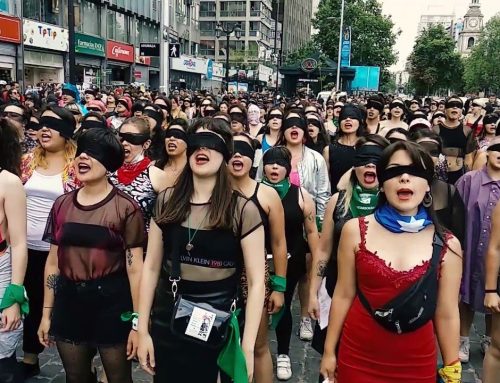The impact of sexual assault on the psychological and somatic (body-based) dimensions of a person is complex and can take several forms. But how does sexual assault affect body image? Most survivors experience disturbances in their body image, ranging from a mild preoccupation with their physical appearance, to self-injury, eating disorders and body dysphoria. Because the body has been treated as an object by the perpetrator, and the boundaries of the self have been damaged and violated, there is often a dissociation and separation from the body itself. Part of this is denial: “it did not happen to me, but to this body.” Part of this is the psychosocial coping mechanism to decrease bodily pain, and part of that is pure rejection; the body is seen as something shameful, disgusting, and dirty for “letting the assault happen.” The focus of the survivor is on molding, punishing, controlling, and treating the body as something external (an object). Radically different coping strategies fall under this category: from comfort food, to binge and purge behaviors, self-harm and elective cosmetic surgery. The goal may be to meet externally empower themselves by meeting the cultural standard of beauty, or to deny their own body in order to avoid sexual attention. Either way, there is less and less capacity for the survivor to understand and correctly read the signs of the body (hunger, thirst, fatigue, etc.) and be attuned with its needs. This state of constantly monitoring and paying attention to how the body should look (instead of how it feels) is placing the life force at the outside of the survivor, and reinforcing the objectification of the body, as something to be used by others. How can we then reverse the cycle? The concept of body image resilience may be applicable if we think of body memories all individuals have experienced at some point in their lives, experiences that connected them to power, confidence and trust. Expanding and embodying those past positive experiences is as fundamental as the psychotherapy trauma work. Survivors cannot fully heal without raising their critical mind to analyze media messages and start talking about their own bodies and the bodies of others in a way that respects each person’s inner journey and identity. Bodies are fantastic instruments (not objects) and the foundation of the self; the more comfortable we are in our skin, the stronger we will become in our lives and the easier it will be to recover from trauma.
Body Image and Sexual Assault
Share This Story, Choose Your Platform!
Body Image and Sexual Assault
The impact of sexual assault on the psychological and somatic (body-based) dimensions of a person is complex and can take several forms. But how does sexual assault affect body image? Most survivors experience disturbances in their body image, ranging from a mild preoccupation with their physical appearance, to self-injury, eating disorders and body dysphoria. Because the body has been treated as an object by the perpetrator, and the boundaries of the self have been damaged and violated, there is often a dissociation and separation from the body itself. Part of this is denial: “it did not happen to me, but to this body.” Part of this is the psychosocial coping mechanism to decrease bodily pain, and part of that is pure rejection; the body is seen as something shameful, disgusting, and dirty for “letting the assault happen.” The focus of the survivor is on molding, punishing, controlling, and treating the body as something external (an object). Radically different coping strategies fall under this category: from comfort food, to binge and purge behaviors, self-harm and elective cosmetic surgery. The goal may be to meet externally empower themselves by meeting the cultural standard of beauty, or to deny their own body in order to avoid sexual attention. Either way, there is less and less capacity for the survivor to understand and correctly read the signs of the body (hunger, thirst, fatigue, etc.) and be attuned with its needs. This state of constantly monitoring and paying attention to how the body should look (instead of how it feels) is placing the life force at the outside of the survivor, and reinforcing the objectification of the body, as something to be used by others. How can we then reverse the cycle? The concept of body image resilience may be applicable if we think of body memories all individuals have experienced at some point in their lives, experiences that connected them to power, confidence and trust. Expanding and embodying those past positive experiences is as fundamental as the psychotherapy trauma work. Survivors cannot fully heal without raising their critical mind to analyze media messages and start talking about their own bodies and the bodies of others in a way that respects each person’s inner journey and identity. Bodies are fantastic instruments (not objects) and the foundation of the self; the more comfortable we are in our skin, the stronger we will become in our lives and the easier it will be to recover from trauma.
Share This Story, Choose Your Platform!
Leave A Comment
You must be logged in to post a comment.





Leave A Comment
You must be logged in to post a comment.